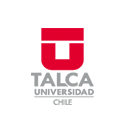
2 results
Search Results
Now showing 1 - 2 of 2
Item The global distribution and environmental drivers of the soil antibiotic resistomeAutores: Delgado-Baquerizo, Manuel; Hu, Hang-Wei; Maestre, Fernando T.; Guerra, Carlos A.; Eisenhauer, Nico; Eldridge, David J.; Zhu, Yong-Guan; Chen, Qing-Lin; Trivedi, Pankaj; Du, Shuai; Makhalanyane, Thulani P.; Verma, Jay Prakash; Gozalo, Beatriz; Ochoa, Victoria; Asensio, Sergio; Wang, Ling; Zaady, Eli; Illan, Javier G.; Siebe, Christina; Grebenc, Tine; Zhou, Xiaobing; Liu, Yu-Rong; Bamigboye, Adebola R.; Blanco-Pastor, José L.; Durán, Jorge; Rodríguez, Alexandra; Mamet, Steven; Alfaro, Fernando; Abades, Sebastián; Teixido, Alberto L.; Penaloza-Bojaca, Gabriel F.; Molina-Montenegro, Marco A.; Torres-Díaz, Cristian; Pérez, Cecilia; Gallardo, Antonio; García-Velazquez, Laura; Hayes, Patrick E.; Neuhauser, Sigrid; He, Ji-ZhengBackground: Little is known about the global distribution and environmental drivers of key microbial functional traits such as antibiotic resistance genes (ARGs). Soils are one of Earth's largest reservoirs of ARGs, which are integral for soil microbial competition, and have potential implications for plant and human health. Yet, their diversity and global patterns remain poorly described. Here, we analyzed 285 ARGs in soils from 1012 sites across all continents and created the first global atlas with the distributions of topsoil ARGs. Results: We show that ARGs peaked in high latitude cold and boreal forests. Climatic seasonality and mobile genetic elements, associated with the transmission of antibiotic resistance, were also key drivers of their global distribution. Dominant ARGs were mainly related to multidrug resistance genes and efflux pump machineries. We further pinpointed the global hotspots of the diversity and proportions of soil ARGs. Conclusions: Together, our work provides the foundation for a better understanding of the ecology and global distribution of the environmental soil antibiotic resistome.Item Soil contamination in nearby natural areas mirrors that in urban greenspaces worldwideAutores: Liu, Yu-Rong; van der Heijden, Marcel G. A.; Riedo, Judith; Sanz-Lazaro, Carlos; Eldridge, David J.; Bastida, Felipe; Moreno-Jiménez, Eduardo; Zhou, Xin-Quan; Hu, Hang-Wei; He, Ji-Zheng; Moreno, José L.; Abades, Sebastian; Alfaro, Fernando; Bamigboye, AdeSoil contamination is one of the main threats to ecosystem health and sustainability. Yet little is known about the extent to which soil contaminants differ between urban greenspaces and natural ecosystems. Here we show that urban greenspaces and adjacent natural areas (i.e., natural/semi-natural ecosystems) shared similar levels of multiple soil contaminants (metal(loid)s, pesticides, microplastics, and antibiotic resistance genes) across the globe. We reveal that human influence explained many forms of soil contamination worldwide. Socio-economic factors were integral to explaining the occurrence of soil contaminants worldwide. We further show that increased levels of multiple soil contaminants were linked with changes in microbial traits including genes associated with environmental stress resistance, nutrient cycling, and pathogenesis. Taken together, our work demonstrates that human-driven soil contamination in nearby natural areas mirrors that in urban greenspaces globally, and highlights that soil contaminants have the potential to cause dire consequences for ecosystem sustainability and human wellbeing.

